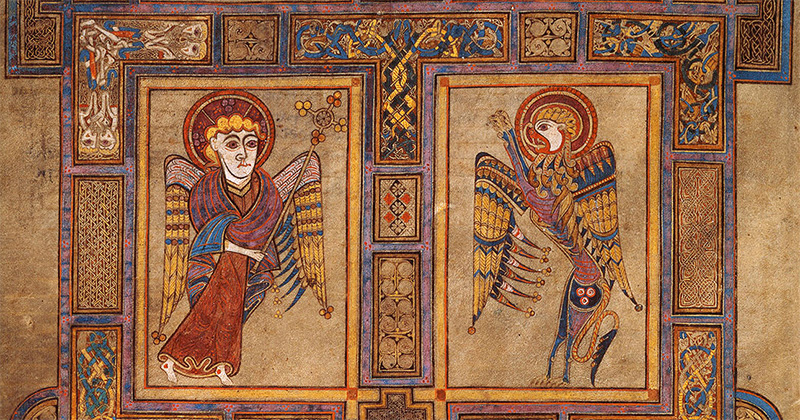
During the study of Celtic Christianity I've been leading at Trenton UC we've looked at the magnificent illuminated or illustrated manuscripts created in the simple monasteries of the time. The Book of Kells is probably the best known example, a remarkable artistic achievement.
We can imagine the monks working with limited lighting in cold cells or in the open air to produce exquisite books including gospels and psalters. In other parts of Europe copyists and artists created examples of the "book of hours" or texts from antiquity which might have been lost otherwise.
Humanity and Life
Hildegard of Bingen 1150 AD
We were reminded recently that it wasn't just monks - men - who produced these manuscripts. While the role of nuns and other female religious has been ignored in the past there is growing evidence that they too were copyists, artists, and often literate.
What was the discovery? Researchers found a special blue paint called ultramarine in the dental plaque of the skull of a nun who lived a thousand years ago. The pigment is made from lapis lazuli, which at one time was more precious than gold, and was used only in expensive documents, including religious texts. Why was it in the nun's mouth? The scribes would create a pointed tip on a brush the way we did as school kids, but popping it in their mouths. While this may sound like wild speculation the researchers were thorough in their work and I find it fascinating.
No friends, I do not have too much time on my hands...read more...
https://www.theatlantic.com/science/archive/2019/01/the-woman-with-lapis-lazuli-in-her-teeth/579760/

Book of Kells 800 AD?
No comments:
Post a Comment